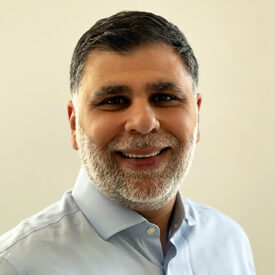An indie’s perspective: Proprietary media needs to go

Opinion
Proprietary media doesn’t benefit smaller brands or agencies, resulting in a two-tier system. I still don’t think proprietary media can offer better value than a well-considered media strategy.
The media sector likes a good spat. In recent years, black boxes, various holdco acquisitions and Origin have all provoked “lively debate” at industry events and online.
However, public disagreements between — typically collaborative — trade bodies tend to be less common. Until now. The IPA and Isba, the industry bodies representing agencies and brand advertisers respectively, have — to use popular parlance — got beef.
In a statement published on its website, the IPA’s (note) director of legal and public affairs, Richard Lindsay, took issue with Isba’s assertion that its new Media Services Framework is “industry agreed”.
He wrote: “If agencies had genuinely been part of the consultation process, the Media Services Framework would be balanced, coherent and fair. It isn’t, in our view.”
Mic drop.
Nick Manning: ‘Principal-based media’ is bad for the whole industry – here’s why
Conflict of interest or misleading myth?
At the heart of all this unpleasantness lies the issue of proprietary media, sometimes known as principal buying — specifically, the practice by which media agencies use their own budget to buy ad inventory direct from the media owner and sell it on to clients.
This model that took hold in the 2010s and is most regularly used by the largest agencies, which are able to buy in bulk and thus negotiate preferential rates. It’s still going strong and, notably, Meta is reported to be in talks with the holding groups to extend proprietary buying on to its platforms.
It’s an approach that suits these agencies’ global clients. After all, if you’re a brand with deep pockets, then you’re going to want the most valuable placements for the best prices.
However, Isba’s director of agency services, Nick Louisson, suggests that bulk buying is non-compliant with its guidelines and flags that frustration among members is “highly prevalent”.
After all, proprietary media blurs the separation between agency and client funds — something that could create conflicts of interest that undermine the transparency and fairness standards set out in the Media Services Framework.
This hasn’t gone down well with the IPA. Lindsay contends that Isba is perpetuating a “myth” that “all media agencies are duplicitous” and “paints a misleading picture of how agencies operate”.
False economy
There is of course truth in Lindsay’s assertion that agencies do take a risk in purchasing inventory media — and, yes, this model will offer some peace of mind to media owners.
Yet it would be hard to argue against the fact that it’s in the interests of those agencies that do buy in bulk to shift as much of this inventory as possible to mitigate the risk of their investment.
Regardless of how you spin it, the graveyard shift around a 1980s rerun at the dustier end of the electronic programme guide is hard to justify as a strategic buy. Consequently, it should come as no surprise to anyone that this would frustrate advertisers to the extent that they’ve taken it up with their industry body.
In a perfect world, this would be the impetus for change. And we need it. Advertisers — and, I strongly suspect, media owners — would do better in the long run if we were to consign proprietary media to history.
I’m not holding my breath, though. There’s no good reason — at least that I can see — why any agency would continue pushing such an inefficient model, unless it is cost-effective for them.
It certainly doesn’t benefit smaller brands, or the agencies they work with, which don’t have the opportunity to access vast swathes of slots.
Hands up, I am not an impartial observer, so I’m not being entirely altruistic in calling out what looks very much like bad practice. I run an independent agency and while proprietary media doesn’t appear to work for some Isba members, it certainly doesn’t work for us indies either.
The perception is that indies aren’t able to compete with holdcos on rates, and while there may be some truth to this thanks to proprietary media, the jury is out on whether it’s a false economy.
Plus ça change
A disparity of opportunity should be of growing concern to all stakeholders across the value chain, because the status quo offers a clear advantage to the biggest, global agencies — and their bargaining power is only set to grow in the wake of further consolidation.
I’d love to see a more even playing field and I don’t think AI, or any other “silver bullet”, is going to magically make this happen. Nothing is likely to change, given that would mean all agencies would have to work harder on strategic planning to justify media choices and targeting.
Moreover, it would likely mean lower margins for those buying in bulk and higher prices for primetime slots for their big clients.
For now, we are left with a two-tier system that suits the incumbents down to the ground but leaves the challengers — brands and agencies alike — at a “perceived” disadvantage.
I would happily counter any argument that proprietary media offers better value than a well-considered media strategy, but entrenched perceptions matter — even when they’re plain wrong.
Brands, particularly younger ones, looking to grow by taking tentative steps into paid media typically won’t have the experience to know when they’re being fobbed off — nor can they afford wastage.
We all know there’s no one-size-fits-all approach to media. Our industry needs to have more open conversations about what’s right for businesses at different stages in their life cycle — and be honest that proprietary media won’t work for everyone.
Change will only happen if it is forced through by a third party or when enough disgruntled advertisers do more than grumble and actively challenge agency partners that continue to put the needs of their highest-billing clients first.
 Mike Fantis is vice-president, managing partner, UK, at DAC
Mike Fantis is vice-president, managing partner, UK, at DAC




